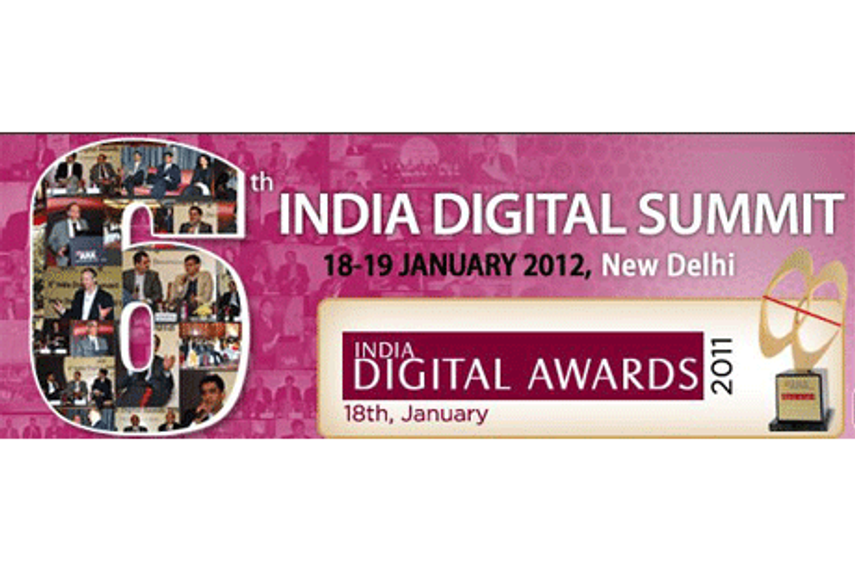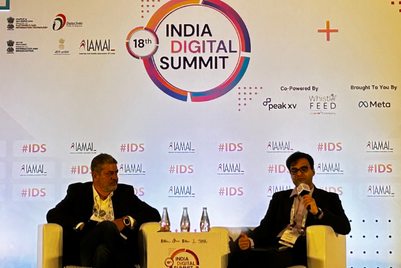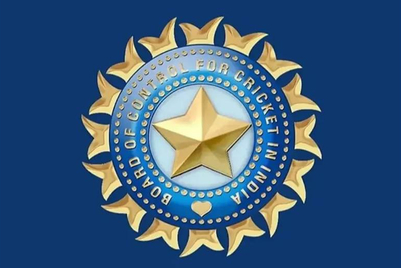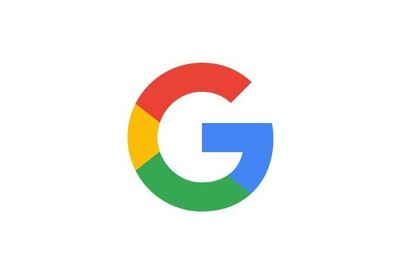
The sixth edition of the annual India Digital Summit flagged off on 18 January 2012 in New Delhi with a big focus on tapping the projected 600 million mobile internet user base by 2020. A series of interesting sessions were conducted where industry’s big names offered their view points on various issues and opportunities associated with the digital India.
The first session dealt with the quandary arising out of the growth of connected Indians. The session, 'Digital Media: the big picture', was chaired by Rajan Anandan, managing director, Google India. Mariam Mathew, chief executive officer, Manorama Online; Upen Rai, director, Times Internet; Natesh Mani, president, Sify; and Dippak Khurana, founder and chief executive officer, Vserv Digital, shared the podium with Anandan.
On whether mobile advertising should be made transactional-oriented to encourage interest among brands to have a bigger presence, Mathew responded in negative. She said, “We as content creators and publishers are responsible for branding of several products; not just ours but others as well. It is however, important to understand how to tell a story. If you start making this very transactional-oriented, it would be very difficult for us in the future to make it a premium medium. Let’s not repeat what we did with internet.”
Khurana called this as the curious case of mobile internet users. He shared that there are around 100 million mobile internet users and 500 million app downloads in India every month. “What surprises me is the growth numbers, and at the back of it there are eager advertisers and agencies who want to know the colour of the spectrum (the details of the large user base). As we progress with this, we will have to get down and convey to them to start from the basics. All in all, my point is unless we have lot of people to convey the strengths and benefits of the medium, we still have a long way to go.”
The panel also discussed the exploding opportunities in social-media marketing and video based content. “Video and social are growing as very powerful mediums. Despite all the bandwidth constraints in India, YouTube has over 35 million users and it has doubled over the last years,” said Anandan. Mathew supported Anandan calling social media as the dream baby of marketers and said, “You have to really understand the worth of the product to utilize social media in an effective way.”
Mani said, “Facebook has over 32 million users. Today, you need to have a social media presence to build an effective digital branding strategy. Many of advertisers are great speakers but bad listeners. Social media changes it. In fact, people who are connected with your brand on social media tend to spend more time on your website than other users. Users love to be engaged than being posed with sales pitches.” Among the panellists, Upen Rai was the only one sceptical if Indian advertisers will find it monetising enough.
Mathew also pointed out that to see an exploding growth in the number of mobile internet user base the development content and searchability of vernacular is critical. “Once the searchability is improved and standardised Unicode fonts are developed this market will move much faster and cross the 300 million internet users,” she said.
The second session of the day involved Ajit Balakrishnan, founder, chairman and chief executive officer, Rediff.com and Sanjeev Bikhchandani, founder and executive chairman, Info Edge, in a Q&A session over bringing broadband to masses.
Balakrishnan started off the discussion expressing his delight that internet has grown from nothing to something. However, he pointed out that in India, the unconstrained access to internet is still less than 10 million. He opined that that this was one reason why several media website, no matter what they tried, haven’t succeeded in crossing beyond the one or two million user mark.
He said the biggest reason for this is that broadband in India is one of the costliest than anywhere else in the world. “The payback time in broadband is not similar to that of cellular. The ROI comes in after 30 or 40 years. It’s one thing to see the boost in numbers, but I think we should think what we should do to bring broadband to masses.”
Taking a dig at the 3G revolution in the telecom sector, he said, “3G is a hoax. Around 90% of the voice bands in India are very thin line. What we are seeing is that the operators are trying to engage in spectrum cramping.”
During a plenary session addressed by Dhruv Shringi, vice chairman of IAMAI and co-founder, Yatra.com, Shringi stated that marketers need to focus and gear up, if they wish to hit the magical number of 300 million mobile internet users. He called in for the need of creating services which would attract users online. “Last year, the mobile transactions were at 1%. This year, the stats show that it has grown to touch 5%. So of course, growth is there. But to make the growth better, different models of payment should be allowed to facilitate users with the ease of buying.”
In his keynote address and presentation, Dilip Modi, managing director, Spice Global, focused on how mobile could gather a population of 800 million mobile users. He said that the introduction of the Monsoon Hungama offer from Reliance which offered people unlimited talk time at the price of Rs. 501 had shook the whole telecom industry. Concluding his presentation he said that for the mobile internet market to pick up, it was imperative to see another Monsoon Hungama offer from any of the telecom operators. He also suggested that this should be followed with availability of mobiles and tablets at a much lower price.
A panel consisting Vishwanath Alluri, founder, chairman and chief executive officer, IMI Mobile; Vijay Shekhar, founder, chairman and managing director, One97; Jay Sheth, president and chief executive officer, Air2Web India; and Kunal Bajaj, partner and director, Analysys Mason India, discussed the mobile VAS (Value Added Service) market in India.
Sheth said, “The awareness of the consumer of how to use a mobile and VAS is already there. Albeit, there are inefficiencies in the market, long term growth lies in performance marketing.” Shekhar echoed Sheth’s views and added, “The era of consumer as true king is arriving. Till now, the operators were deciding what the consumers could consume. Nonetheless, the ecosystem's development will take time.”
Bajaj felt that the apps with localised content had more opportunities in store. “For the first time, India too is now consuming and looking for high-end devices like a tablet or a costly smartphone. But at the same time what will trigger the opportunities to grow exponentially is when this large mobile internet user-base is provided with localised content.” When Shekhar asked Bajaj if in future revenue would arise out of advertising on mobile applications, Bajaj replied, “We are all hoping it to be but that can't just be from advertising only. You will have to have a mix of different solutions. Indians would eventually like to pay for apps, but for that, a secure alternative payment mode has to be developed using mobiles; especially, in the event of the low penetration of credit cards in India.”
The session moderated by Neeraj Roy, managing director and chief executive officer, Hungama Digital, discussed social entertainment and the merger of content, social media and video platforms. Roy started the discussions saying, “With the advent of internet, TV is not only prime time; prime time is my time.”
Vivek Bhargava, founder, Communicate2 and one of the panellists of the session added to Roy’s views by saying, “Digital is the way that even video will work in future. There is still opportunity. Brands have to evolve and become quasi publishers, and also teach their consumers how digital works.”
Rahul Saighal, chief marketing officer, Aircel called the culmination of content, social and video as a positive disruption and added that in 2012 it is expected that 50% of US television will be smart TV. “Suddenly we will enter the era of mass customisation. As a marketer, we have to realise that the era of 30 sec of TVC is going to decline. With the evolution of digital content, social media, and video, the concept of this 30 seconds time will go through a big change.”
Citing an example from the viral campaign done for the Dark Knight Rises, George John, marketing director, Warner Bros India, explained how the innovative social apps and blogs were built around the movie that are engaging the internet users, right from the release of the teasers, to trailers and will continue until the movie hits the screen.
The final session of the day talked about the present and future of ecommerce in India. Harish Bahl, founder and group cheif executive officer, The Smile Group, kept both the audiences and panellists engaged and entertained with his wit and humour. The panel comprised of Vinay Gupta, founder and chief executive officer, Via.com; Sundeep Malhotra, chief executive officer, HomeShop18; Muralikrishnan B, country manager – India and Philippines, eBay; and Binny Bansal, co-founder and chief operating officer, Flipkart.com.
Discussing the various models for running a successful ecommerce venture, Gupta said, “Needs creates sales, and whenever a shop comes closest to a customer’s need, it becomes viral. Profitable growth is fine only if you are focused on your target customers. What clicked for us was that we built malls inside shops.”
Bansal said that a balanced growth was more important than having a core focus on topline or bottomline. Malhotra added to Bansal’s point of view saying, “Balanced growth is the best way to approach ecommerce because we are still not mature enough market to look at the consolidation. Instead of looking at the basket size, the focus should be on frequency of sales attained from a customer. Most of the physical retailers today are on a sale. We (Indians) have bargaining in our blood. Discount is the first step before you can provide value-add. Consumer is ultimately a bargain hunter.” Muralikrishnan felt that it was important for marketer to ascertain if he is looking for short-tern returns or if he wants to build a sustainable business for a long term.
Bahl, who had moderated the session, felt that all value based adoptions need to acquire consumers, and that the long run is about access.
The Day 1 of the India Digital awards concluded with a Digital Awards Gala Ceremony which felicitated winners in 6 main and 33 sub categories.








.png&h=268&w=401&q=100&v=20250320&c=1)

